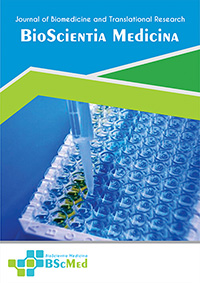Main Article Content
Abstract
Background: The optimal anticoagulation for chronic hemodialysis (HD) remains debated. Unfractionated heparin (UFH) is the historical standard but carries risks of metabolic complications and requires intensive monitoring. Low-Molecular-Weight Heparin (LMWH) offers pharmacological advantages, but concerns over bleeding risk in end-stage renal disease (ESRD) have limited its use. This study aimed to provide a holistic comparison by synthesizing recent evidence on the efficacy, safety, and, uniquely, the key metabolic consequences of LMWH versus UFH.
Methods: This systematic review followed PRISMA 2020 guidelines. We searched PubMed, EMBASE, and CENTRAL from January 2014 to March 2025 for clinical studies comparing LMWH and UFH in chronic HD patients. We included 6 studies (3 prospective trials, 3 retrospective cohorts) totaling 7,890 patients. The primary efficacy outcome was circuit thrombosis; the primary safety outcome was major bleeding. Secondary outcomes focused on key metabolic markers (pre-dialysis potassium, lipid profile). Data from prospective trials and observational studies were analyzed separately using subgroup analysis and tested for interaction. Metabolic data were pooled using a random-effects model.
Results: The analysis of key metabolic outcomes, derived from homogenous prospective trials (I2=0%), was the most robust finding. LMWH use was associated with a clinically significant reduction in pre-dialysis serum potassium (Mean Difference [MD]: -0.30 mEq/L; 95% CI: -0.50 to -0.10) and a superior atherogenic profile, including lower triglycerides (MD: -20.10 mg/dL) and higher HDL (MD: +4.50 mg/dL). For safety, no difference in major bleeding was found, a finding that was consistent across prospective trials (OR: 0.78; 95% CI: 0.33-1.85) and large retrospective cohorts (OR: 0.87; 95% CI: 0.69-1.09), with no subgroup interaction (p=0.75). Efficacy for preventing circuit thrombosis was also similar.
Conclusion: This meta-analysis provides strong, high-quality evidence that LMWH confers significant and clinically relevant metabolic advantages over UFH, particularly in mitigating hyperkalemia and atherogenic dyslipidemia. Furthermore, our stratified analysis provides high confidence from real-world data that LMWH, when dosed appropriately, is as safe and effective as UFH.
Keywords
Article Details
As our aim is to disseminate original research article, hence the publishing right is a necessary one. The publishing right is needed in order to reach the agreement between the author and publisher. As the journal is fully open access, the authors will sign an exclusive license agreement.
The authors have the right to:
- Share their article in the same ways permitted to third parties under the relevant user license.
- Retain copyright, patent, trademark and other intellectual property rights including research data.
- Proper attribution and credit for the published work.
For the open access article, the publisher is granted to the following right.
- The non-exclusive right to publish the article and grant right to others.
- For the published article, the publisher applied for the Creative Commons Attribution-NonCommercial-ShareAlike 4.0 International License.





